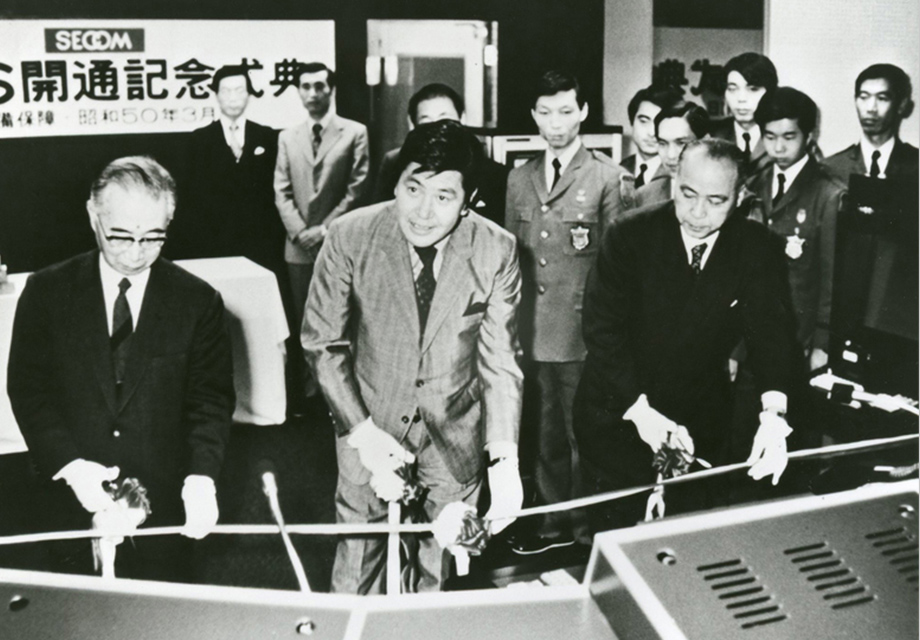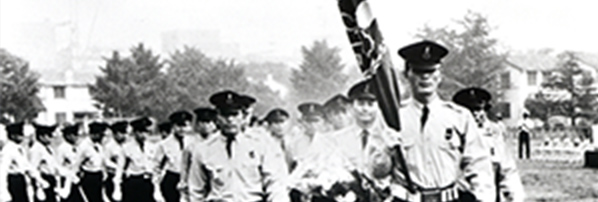Early Days of SECOM 01−10 (1961−1965)
"The Early Days of SECOM" begins a while before SECOM's establishment in July of 1962.In this section we look back on the history of SECOM to show how the foundation of the company was built.
- 01-10
(1961−1965) - 11-20
(1966−1969) - 21-30
(1970−1975)
- 01
- 02
- 03
- 04
- 05
- 06
- 07
- 08
- 09
- 10
- 11
- 12
- 13
- 14
- 15
- 16
- 17
- 18
- 19
- 20
- 21
- 22
- 23
- 24
- 25
- 26
- 27
- 28
- 29
- 30
1. How SECOM was founded
Makoto Iida graduated from Gakushuin University in 1956 and started helping his family business, Okanaga Shoten (now Okanaga), a liquor distributer in Nihonbashi, Tokyo, as a salesman. Juichi Toda was a good friend with whom he would discuss starting their own business alongside an occasional drink.
It was the winter of 1961 when Iida and Toda were having dinner with a friend who had just returned from a trip in Europe. Over delicious chicken pot, the friend explained that there were companies in Europe making businesses of security.
Iida and Toda immediately agreed that this was what they had been looking for. It was the moment when the idea of the very first security company in Japan was formed. The decision took them less than 30 minutes.
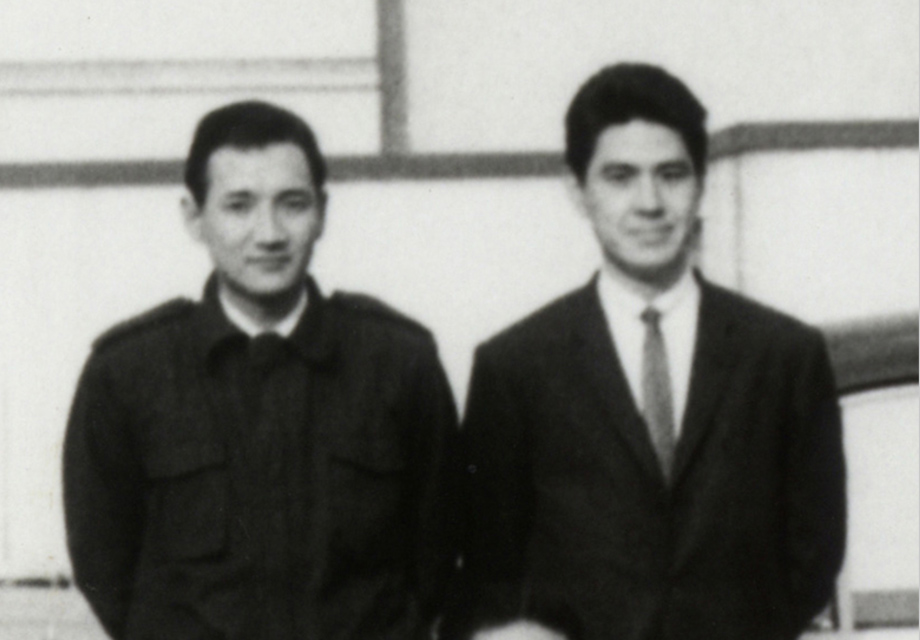
2. The first office in Kudan, Tokyo is opened
After the decision was made by Iida and Toda to start the first-ever security company in Japan in the winter of 1961, they immediately opened an office. It was located at Chiyoda Kaikan, 2-2-8 Kudan Minami, Chiyoda-ku, Tokyo. The office was right across the street from Yasukuni Shrine, nearby the Indian Embassy, which still exists today.
This office was primarily used to gather information and lay plans. It was a place where Iida and Toda experienced many difficulties and painstaking efforts that often accompany startups. According to them, nearby is Chidorigafuchi, well known for its beautiful scene of sakura (cherry blossom) trees. They could still remember the sakura that they saw from the office windows during the spring of 1962. It was in July of the same year, after countless diligent efforts, that Nihon Keibi Hosho was established.
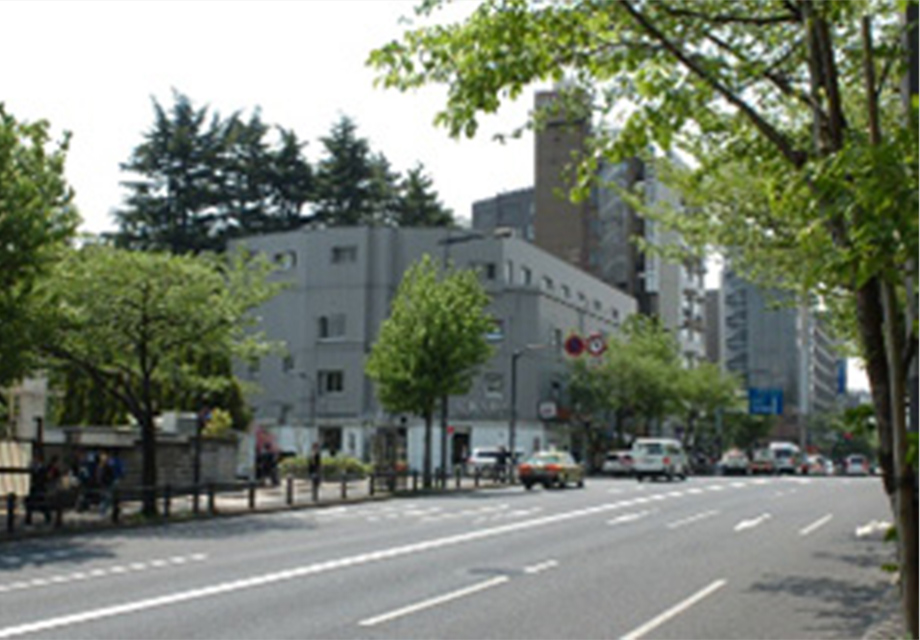
3. “Nihon Keibi Hosho” is founded at ShibaKoen, Tokyo
On July 7th, Iida and Toda established Nihon Keibi Hosho (currently SECOM). The address was 2nd Floor, SKF Building 7-1 Shiba Koen, Minatoku, Tokyo (now 1-9-1 Shiba Daimon, Minatoku). Capital was ¥4 million and was a mixture of their own savings and additional finance from a bank.
The name of the company was carefully chosen. Keibi means security in Japanese, and since it was the first security service business in Japan, Nihon, meaning Japan, came first. Hosho can be interpreted in two different ways depending on the Japanese characters, one meaning “compensation” and the other meaning “security. ”The characters meaning the latter were chosen, however, this was still a wise decision because the sound used could also mean “compensation.
Then recruitment started by means of advertising in the newspaper. A new word for security guard, keimushi, was created, which mimed bengoshi meaning lawyer.
Amazingly, there was a total of 400 applicants, among whom two were chosen, and the business started with just five people.
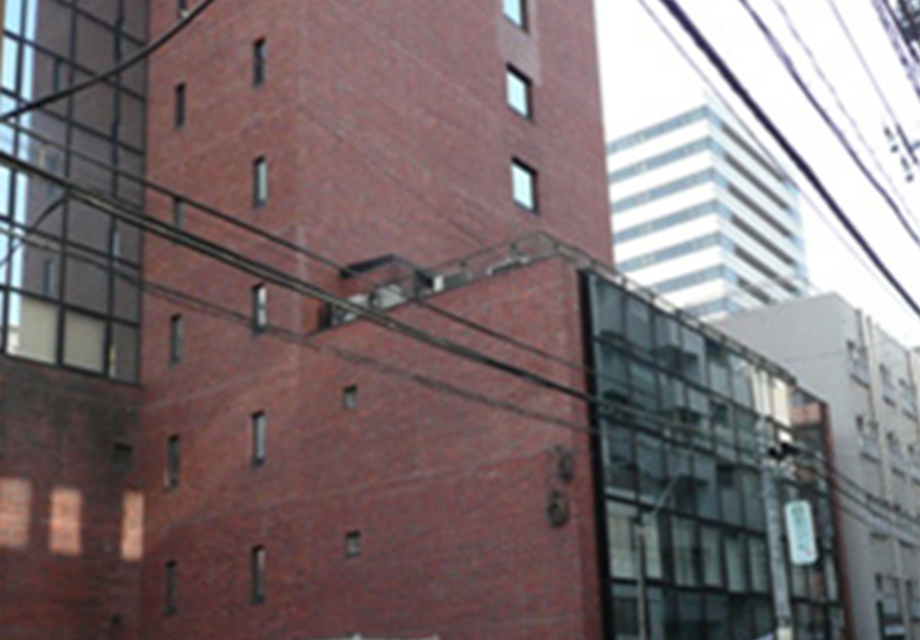
4. The first contract
After the company's establishment on July 7th, Iida and Toda made several important decisions.
One of their decisions was to incorporate an owl and key in the company's emblem. The owl was well known for its intelligence and was a nocturnal animal. The key, of course, was a symbol of security.“VIGILAMUS DUM DORMITIS,” meaning “We defend when the public rests” in Latin, came at the top. (While the company symbol that we use today has changed to “SECOM,” the owl and key design was still used on the buttons and caps of the uniforms of security guards).
In the early days Iida handled sales by himself and visited numerous companies. Although most of them were interested in what he was offering, none would actually contract. Iida stubbornly asked for three months of prepayment and also stuck to his policy of not depending on his friends or network. This was one of the reasons why the starting period of sales took so long.
The first order came on October 24th, 1962, almost four months after the establishment of the company, from a travel agent for manned patrol services. Iida kept reciting the Japanese proverb: “A rolling stone gathers no moss," and "Sales need patience." With that in mind, he continued his sales visits again and again, even visiting offices without an appointment. The first order was a result of such relentless efforts.

5. Office relocated to Kanda Ogawamachi, and first Static Guard Service commences
The head office was relocated to 3-4 Kanda Ogawamachi, Tokyo in April. To get to the office, it needed to take the elevator to the top floor followed by a flight of stairs to the roof. The office was small, merely 23 square meters, and the ceiling was very low.
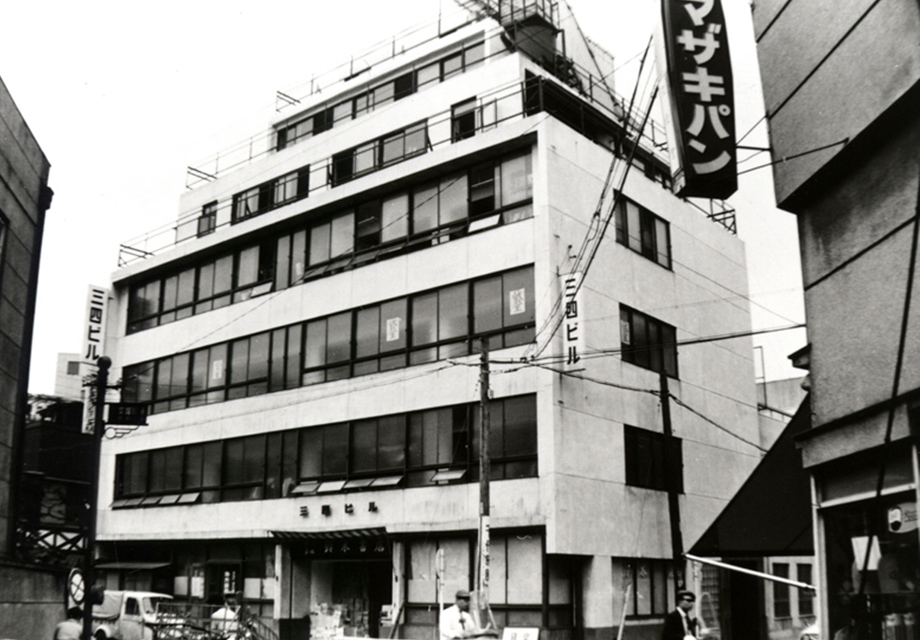
6. First Static Guard Service commences
The head office was relocated to 3-4 Kanda Ogawamachi, Tokyo, in April of 1963. In the same month, the first order for static guard services was contracted. During this time, patrolling service was going well and the customer base had reached double digits.
The first static guard service customer was the Harumi International Convention Center in Tokyo.There were no high-tech buildings at that time and automobiles were displayed outdoors when motor shows were occasionally organized. There was no rooms for security guards, so tents were brought in to provide around-the-clock services. The Convention Center was close to Tokyo Bay, and when services commenced in spring it was still very cold, especially when it rained.
It was this year when Isetan Department Store assigned SECOM for static guard services. The services were commissioned during that year.
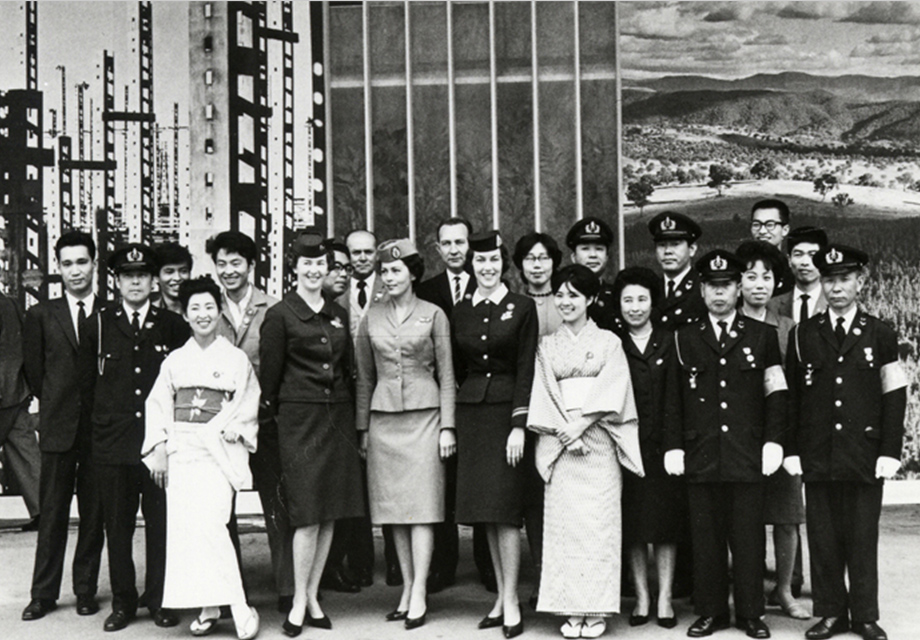
7. Security for Tokyo Olympic Games is awarded
At the end of 1963, SECOM received an inquiry from the Tokyo Organizing Committee of the Olympic Games. SECOM was asked to provide security services for the Olympic Village which was still under construction. Although it was a large and attractive job, Iida was anxious about the short-term contract period. Dramatically increasing staff to meet requirements would be necessary, but there was uncertainty of securing the jobs to retain employment after the Olympic Games ended.
On December 10th, the official contract was signed with the Tokyo Organizing Committee. When services were carried out, there were still around 400 houses (originating from the American Armed Forces) waiting to be demolished. There were quite a number of intrusions by thieves, children, and couples, making the job difficult. The area was so expansive that bicycles were brought in for patrolling.
On October 10th, 1964, the Tokyo Olympic Games officially commenced, and the Closing Ceremony was set on October 24th. After that, SECOM received an official gratitude from the Tokyo Organizing Committee for having successfully completed its duty during the Games. The Olympic Games had certainly earned SECOM public trust and elevated the company to the next stage.
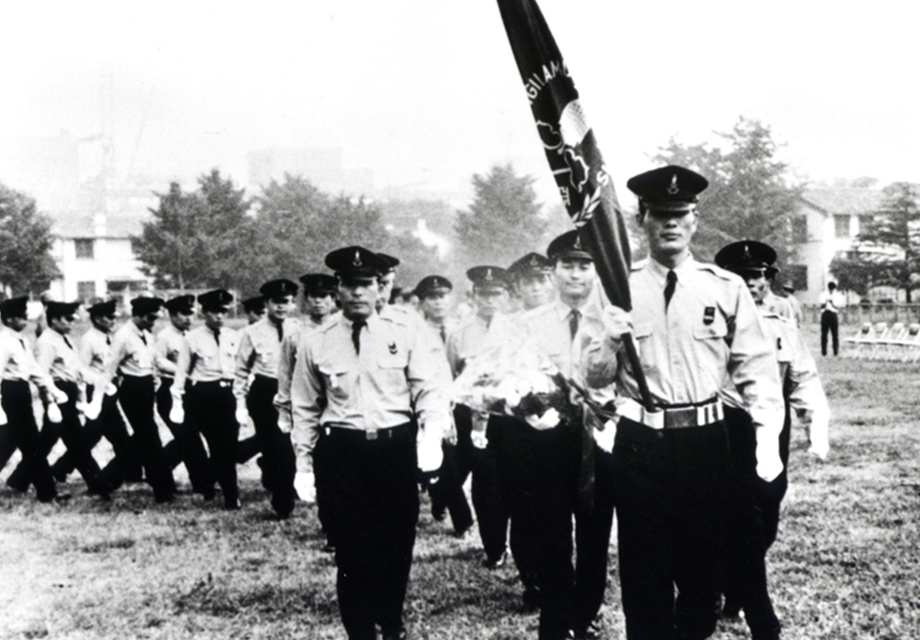
8. Head Office relocated for the third time to Kurosawa Building
On March 1st, 1964, the head office was relocated for the third time in two years. It was moved to 7th Floor, Kurosawa Building, 1-4 Kanda Jinbocho, Chiyodaku, Tokyo. Since the number of employees had dramatically increased due to the Olympic Games contract, the previous office turned out to be too small, which was just 23 square meters. Only a single truck ride was required to relocate the entire office.
The new office was a seven-minute walk from Ochanomizu Station and only five minutes from the previous office. It faced Yasukuni-dori avenue, and the building was relatively tall. The new office seemed larger than the previous one.
There were around 100 staff at that time. SECOM had provided security services for the Olympic Village during the Games and it was in those days when the business started to grow rapidly.
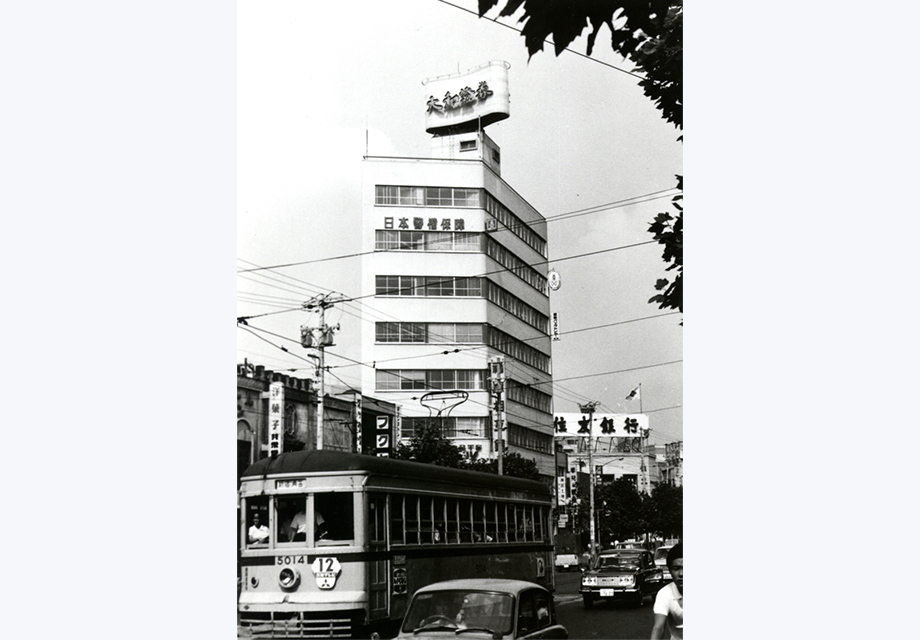
9. Development of SP Alarm
During the 1964 Tokyo Olympic Games, SECOM grew rapidly. It became the impetus for several decisions and policies to be implemented. Four employee awards (now called “SECOM Taisho”), each based on one of the Four Philosophies, were introduced. It was this year that a new performance evaluation system was implemented.
Furthermore, in November of 1964, research and development of SP Alarm (which was later released to the market in June of 1966) was executed. Iida and Toda paid a visit to Shiba Denki Hachioji Factory and requested whether a prototype of SP Alarm could be developed (the tentative name at the time was “Remote Monitoring System”).
There were several reasons behind the decision to start the development of this system. Firstly, if the contracts of patrolling and static guards kept increasing, it would be needed to employ 100,000-200,000 employees, which would be hard to manage. Secondly, Japan was in the midst of vast economic growth and the cost of labor was increasing dramatically. Most of the customers would be unable to afford the service. Finally, Iida believed that functions like sensing, monitoring, and communication that could possibly be made by machines should be automated, whereas functions like decision making, mobilization, and treatment of people should be conducted by human beings. In other words, it was a matter of respecting human dignity.
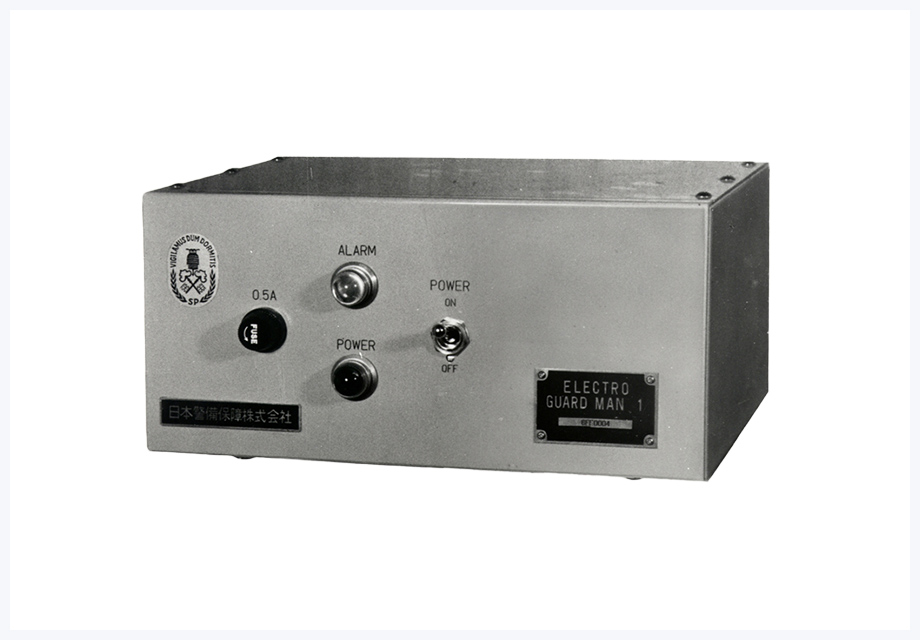
10. TV Drama The Guardman hits the air
“The Guardman" was very popular. Iida is seen center right in the photo.
The Guardman, a drama series produced by a major TV station, TBS, was broadcast for the first time in April of 1965. SECOM became the model for the script because a TV producer had coincidently seen a SECOM security guard at the Imperial Hotel. Back then, security guards were still rare. The series became a big hit and contributed to the spreading of the SECOM brand.
The original title would have been Tokyo Yojinbo*, but Iida complained that SECOM’s service was not a bodyguard. The Japanese-made English word “guardman”, today referring to a security guard, was adopted at that time, so the title was changed accordingly.
Additionally, Iida requested that slang, foul language, womanizing and drinking scene were all prohibited in the TV show.
Mr. Ken Utsui starred in the drama series. The Guardman was full of originality, had a brace of freshness, and enjoyed viewing rates of more than 40%. The original on-air schedule was extended and the drama strongly influenced the public.
* Yojinbo means a bodyguard in Japanese.
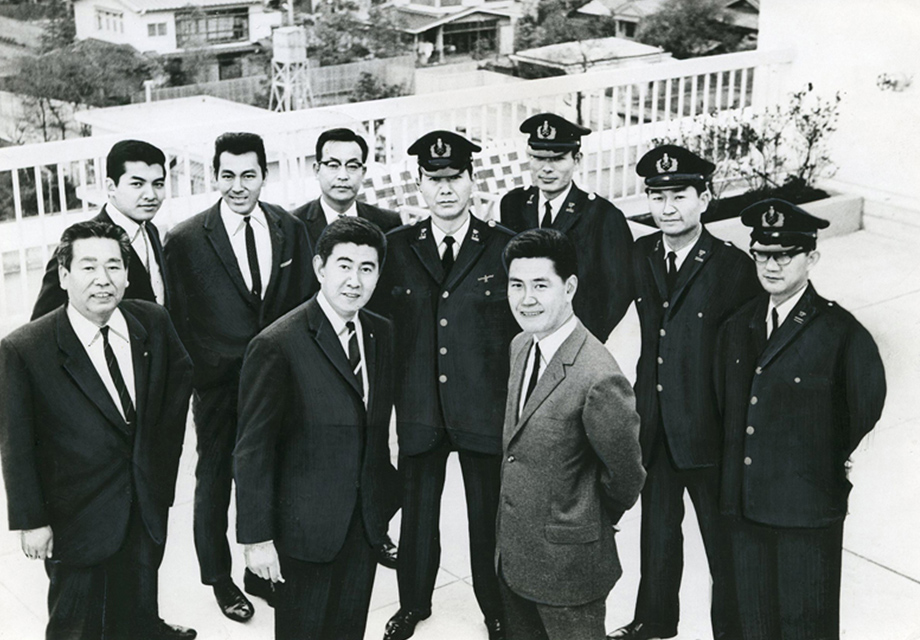
11. SP Alarm hits the market
In May 1966, Japan’s first online security system, SP Alarm, was introduced to the market. The first remote monitoring device had been developed, and sales activities commenced immediately. The first customer was a branch of a bank at Tokyo Ikebukuro.
On June 20th, the first day of commissioning, Iida gave instructions to four staff, "we will start online security services from now on. One of you will monitor the system. The rest of you will stand by and respond to any emergencies when it happens. When the red lamp here goes on, it “means something has happened to the customer, so you have to respond immediately.” The team was ready.
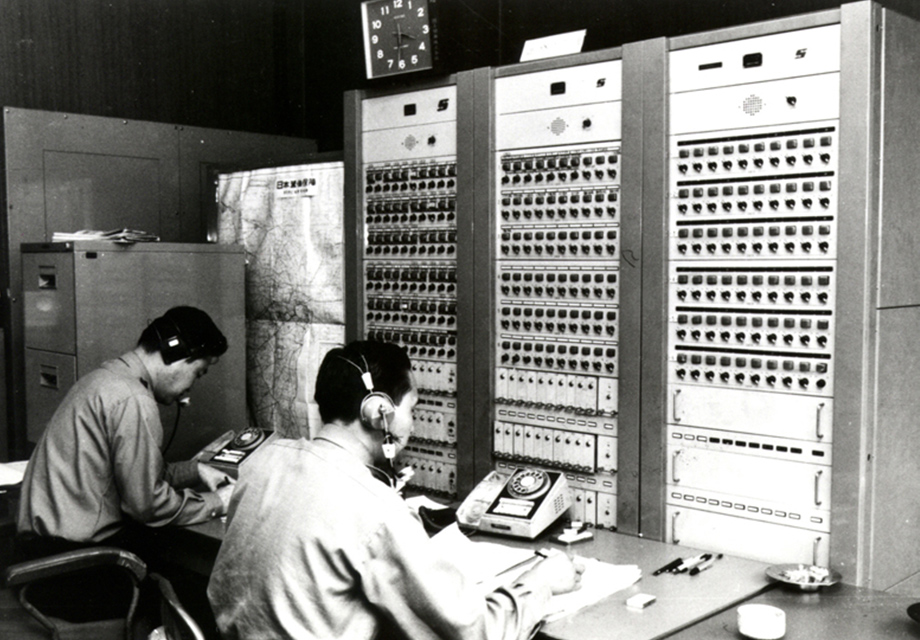
12. The first SP Alarm customer
The first SP Alarm was introduced to the market in May of 1966, and sales activities were first focused on banks. There were hopes that if a major bank became our customer it would create a chain reaction with other banks. It was then when Ikebukuro Branch was robbed, resulting in a night duty staff being injured. In those days the standard operation was to have a night duty employee at each branch so that customers could be responded to at any time. SECOM approached the branch manager.
“It was in 1966 when the bank was robbed. The night duty staff was injured and the incident became top news in the papers. That was when we seriously thought about the (SECOM) system. Back then the night duty shift was universally accepted as standard operation and it was tough to convince headquarters. Finally I pointed out that having a night shift itself is dangerous. The decision was made to try SP Alarm for one year as a trial run. Since the night duty staff was injured, I was very worried lest a second incident should occur. I was dead serious. I even went to Iida-san and asked him to explain the system. The trial paid off. There were no more incidents during that year.” Soon after, on June 20th, the first SP Alarm was commissioned.
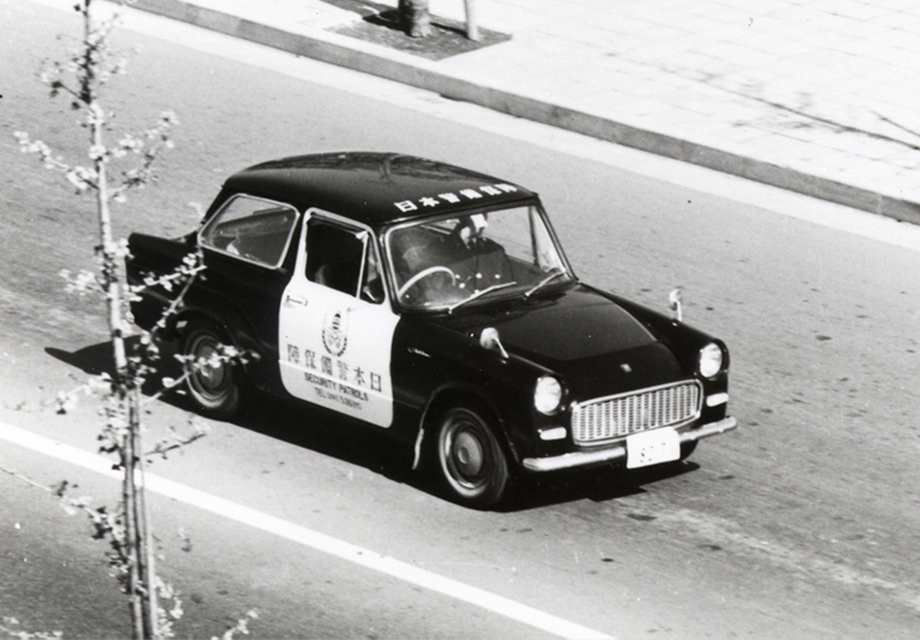
13.“Shasho wo Mamoru Kai ”
It was in 1966, the same year when SP Alarm was introduced, when a sequence of scandals hit SECOM. Employees were caught stealing and the company’s image was jeopardized. Iida was gravely concerned and realized that it was important that every single employee should share the same mentality and the same mission. Thus, in 1967 he started what was nicknamed “Shasho Wo Mamoru Kai," regular meetings among management and staff. These meetings were held periodically and lasted for more than a year.
Teams of a few dozen employees were organized to have an overnight training session. The sessions were scheduled once or twice a week and totaled more than 50 times. It was through these sessions that SECOM’s fundamental philosophies, such as "Challenging for changes", "Spirit of defiance,” and “pursuing dignity” were born. It turned out to be an opportunity to create a more solid organization, as well to start forming the corporate culture.
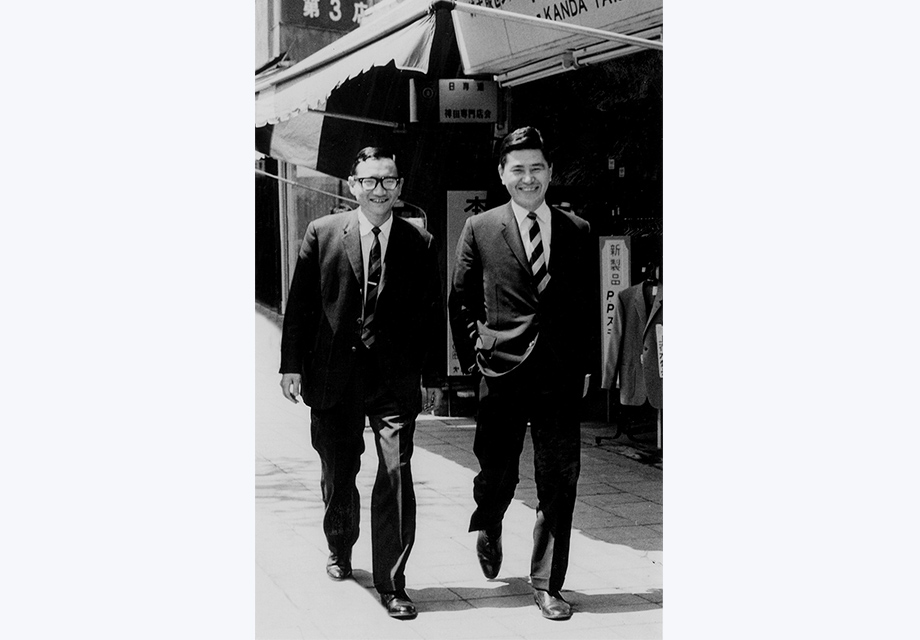
14.Another TV Drama Series hit the air
In autumn of 1966, a series of scandals in which employees were caught stealing placed heavy responsibility on Iida to reestablish the trust that had been lost. Nevertheless, Iida never stopped sales or marketing efforts because he believed that offense is the best defense. Iida then created “Shasho Wo Mamoru Kai,” an opportunity for open discussions between management and staff, to build a more solid organization.
In September SECOM won the first cash-in-transit contract from a major financial institute in Nagoya. The armored vehicle in use was originally designed. The very first group company, Nihon Keibi Hosho Mie, was also established (now known as SECOM Mie Co., Ltd.) and Toda walking through the town of Kanda in April of 1967.
In May of the following year, Nihon Keibi Hosho Joshinetsu (now known as Secom Joshinetsu Co., Ltd.) was established in Niigata. Due to the rapid growth of the business, the head office was moved to 2nd Floor, Kikuchi Building, 3-4-6 Nihonbashi Motoishi-cho, Chuo-ku, Tokyo. While the Board of Directors’ office and the Administration Department moved to Kikuchi Building, Sales Administration Department and Tokyo Operations Department expanded their office on the 7th and 8th floor at Kurosawa Building. Moreover, SECOM became a member of the International Security Association known as Ligue Internationale Des Societes De Surveillance and made its debut in the international arena as the leading security company in Japan.
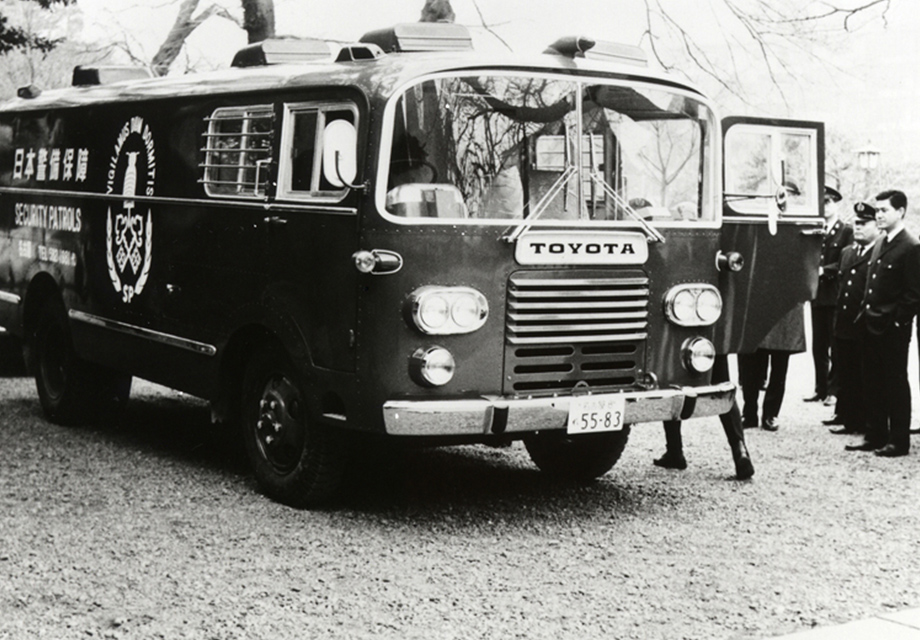
15. Another TV Drama Series hit the air
The Guardman is a well-known example of SECOM serving as a role model in a TV series, while it should be known that SECOM also appeared on an episode of Atsumi Kiyoshi No Naite Tamaruka, starring Kiyoshi Atsumi, the most famous for his role in Tora-san.
It aired on April 2nd, 1967 under the title I, too, am a Guardman (translated from the Japanese original title). SECOM cooperated wholeheartedly by lending uniforms and vehicles that were actually in use at the time. The company name and badge appeared on the show as well. While the description of the duties in The Guardman differed slightly from the reality, in this new drama the actual duties was shown.
A unique tidbit is that famous actor Kiyoshi Atsumi played the roles of different professionals in each series, and each series had different directors and actors, all of whom were first rate. Master film maker Junya Sato, who later directed hits such as Ningen No Shomei, Uemura Naomi Monogatari, and Tonko, was appointed for I, too, am a Guardman.
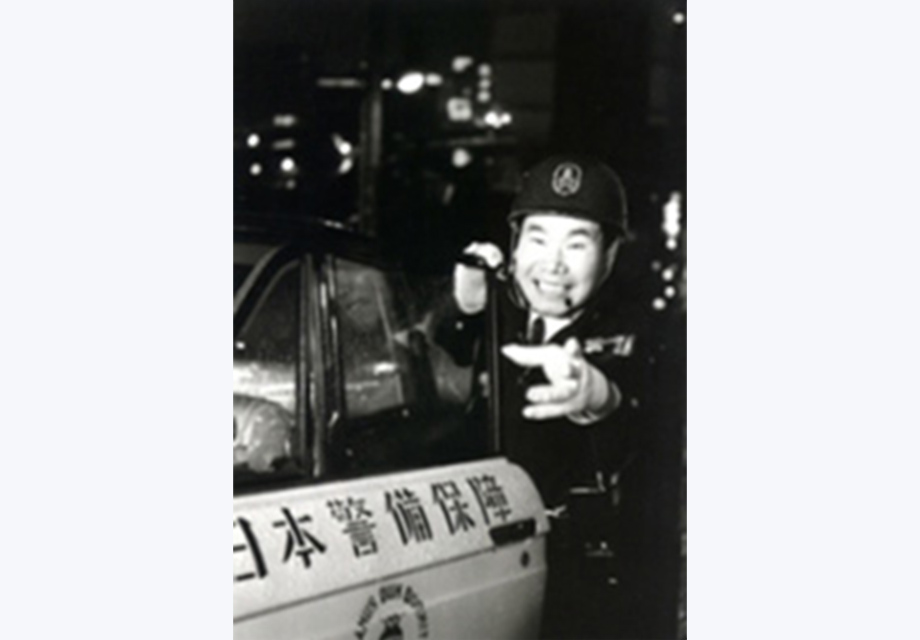
16. Iida delivered his first message in the 5th Anniversary Edition of the company newsletter
An 8 page company newsletter called Warera Keimushi was published. After several editions, in March of 1969 it was renamed Mamori and then in January of 1980 again renamed to Secomity which remains its name to this day. In the 5th Anniversary Edition, Iida’s message, the earliest available on record, was delivered to all employees and their families. The following is an excerpt.
“Nihon Keibi Hosho started as the very first security business in Japan. Often people will mistake us for gatekeepers, but we are very different. We are providing professional high-skilled security services to society, equipped with the latest scientific gadgets for the sake of our customers, and carry out our duty to prevent crimes and fires before those incidents happen.The public expects more of us day by day because our services are valuable to them. On this 5th Anniversary today, we have more than a thousand employees and over a hundred and fifty vehicles, making it impractical for competitors in the industry to catch up. Besides our headquarters in Tokyo, there are branches and group companies in Sapporo, Niigata, Chiba, Yokohama, Hamamatsu, Nagoya, Mie, Kyoto, Osaka, Kobe, Fukuoka, and Kitakyushu.We are now truly a nationwide organization. We have come to this far after five years of hardship and tremendous efforts contributed by all of you. Starting with just five people, this organization had grown to one hundred and fifty in the third year, four hundred in the fourth, and now here we are. Even I am surprised at this rapid growth.”
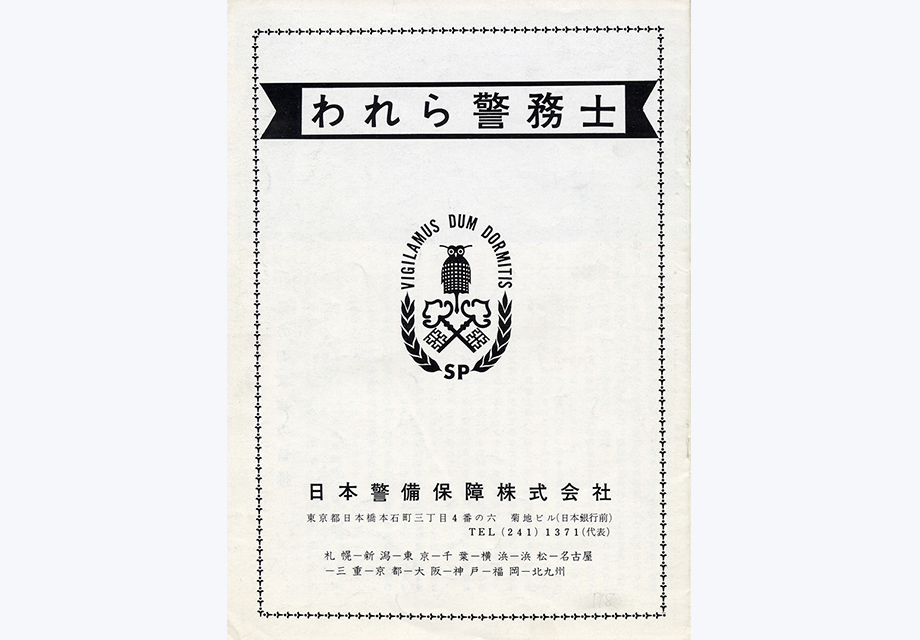
17. SP Alarm contributed to the arrest of “Serial Killer 108” (1)
Throughout SECOM's history, the incident that occurred in 1969 was still by far the most famous instance of a criminal arrest. SP Alarm, in its fourth year, had contributed to the arrest of a serial killer called “Serial Killer 108,” which in turn promoted the effectiveness of online security systems throughout the nation. Here is the story.
It was 1:20 a.m. on April 7th. The Tokyo Regional Control Center received an intrusion signal from the Hitotsubashi School of Business, a SP Alarm customer located in Sendagaya Shibuya-ku, Tokyo. Toshimi Nakatani, working at the Mobile Patrol Squad Tokyo Region, responded immediately according to instructions from the Control Center and after conducting a perimeter check, he found out that the intruder was still within the premises. Before entering the building, he prudently asked a passerby to call the police. Upon entering the premises, he found the office ransacked.
Nakatani flashed his flashlight across the counter. Suddenly there he came across a man crouched on the floor. Nakatani carefully approached and asked the man for his identification. Suddenly, the man raised a pistol and fired as Nakatani managed to strike the suspect’s hand just in time. According to Nakatani, he felt a small pain on his cheek at that exact moment, only to find out later that it was a light gunshot wound. A police officer arrived shortly. However the suspect managed to escape in the darkness towards Meiji Jingu.
The police were put on high alert and at 4:27 a.m., after merely forty minutes, the suspect was apprehended and arrested at last. The suspect was a nineteen year old boy who had fatally shot 4 innocent people in Tokyo, Kyoto, Hakodate, and Nagoya since October of the previous year. He was one of most wanted suspects in Japan and the SP Alarm had played a vital role in apprehending him.
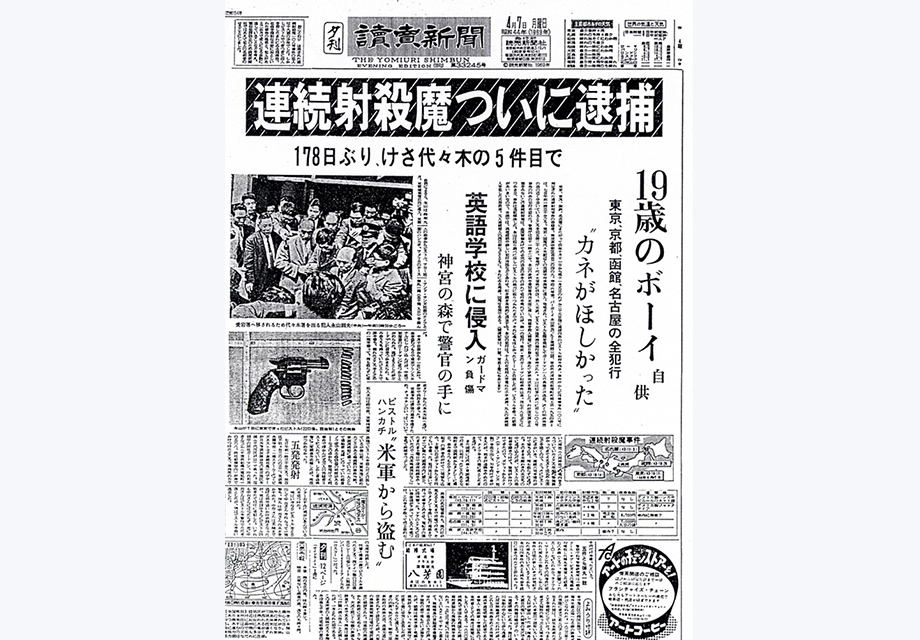
18. SP Alarm contributed to the arrest of “Serial Killer 108” (2)
Early the next morning, after receiving reports that Nakatani had a non-lethal gunshot wound, Iida could not help but tell Nakatani and Sasaki to have a rest when the three met. This incident was a top news story in all major newspapers on the morning of April 8th, and a full detailed explanation of the SP Alarm appeared in the community section with the title Secret Weapon Notifies Authorities. Ever since that day the phones of SECOM had continued to ring.
On April 12th, Nakatani, Sasaki, and the Tokyo Regional Control Center received a special award from Iida for their contributions. After the ceremony Nakatani said, “I never realized this would become such big news. After receiving this prestigious award, I feel deeply honored and am more than happy with what I did.”
On September 21st of the same year, SECOM was unanimously voted for the Golden Award and received it from the International Security Association (Ligue Internationale Des Societes De Surveillance) at the General Assembly.
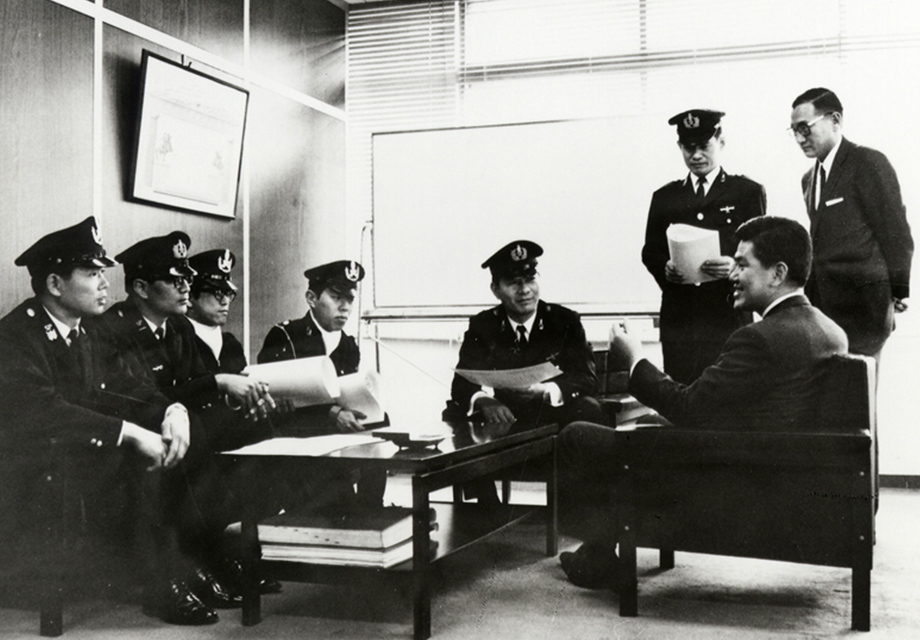
19. Company Song and Anthem were created
The company song and anthem were introduced on July 7th, 1969. At that point, there were more than three thousand employees. The aim was to have a song that would reflect the company's mission and raise employee morale.
Hachiro Sato, well known for his children's literature, wrote the lyrics. He had written the lyrics to “Ringo no uta,” the hit that represented post war Japan back then.“Chiisai Aki Mitsuketa,” the famous nursery rhyme, is also one of Sato's popular creations. Hideaki Yashima would be the composer. The company’s anthem was loved by many until its second version was created in 1984. The first verse anthem is as follows (translation):
In the rain after darkness
In the snow at daylight
We carry our duties with pride and courage
With spirit to give with all our strength
We will shine We will shine
Nihon Keibi Hosho
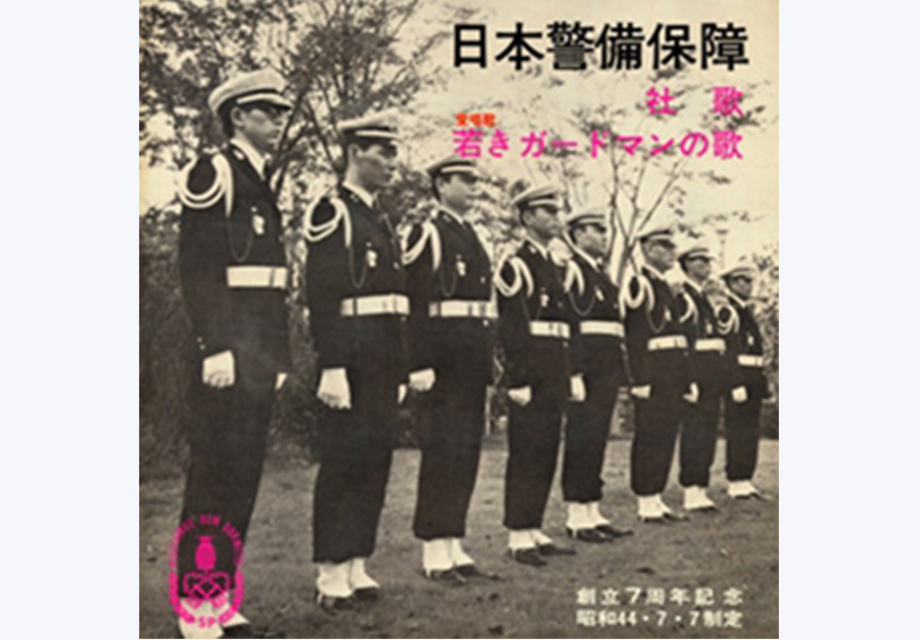
20. Head Office moved for the 5th time, this time to Sankaido Building
A month after the “Serial Killer 108” incident, on May 19th, the head office was moved to 1st Floor Sankaido Building, 1-9-13 Akasaka Minato-ku, Tokyo.
The Sankaido Building was located in the center of Tokyo, close to the United States Embassy and Hotel Okura, and was geographically convenient due to the transportation accessibility. Until it was moved to Shinjuku Nomura Building 9 years later, many employees, who had been with SECOM since its establishment, accumulated many fond memories of those years. The Sankaido Building in Akasaka was the 5th re-location in 7 years.
In addition, the first recreation facility, named Izu Nagaoka Ryo, was launched in April. The Nihon Keibi Hosho Social Insurance Fund (currently Secom Social Insurance Fund) was established in July, and Nihon Keibi Hosho Pension Fund (currently Secom Pension Fund) was established in April of the following year. SECOM's foundation was steadily being fortified.
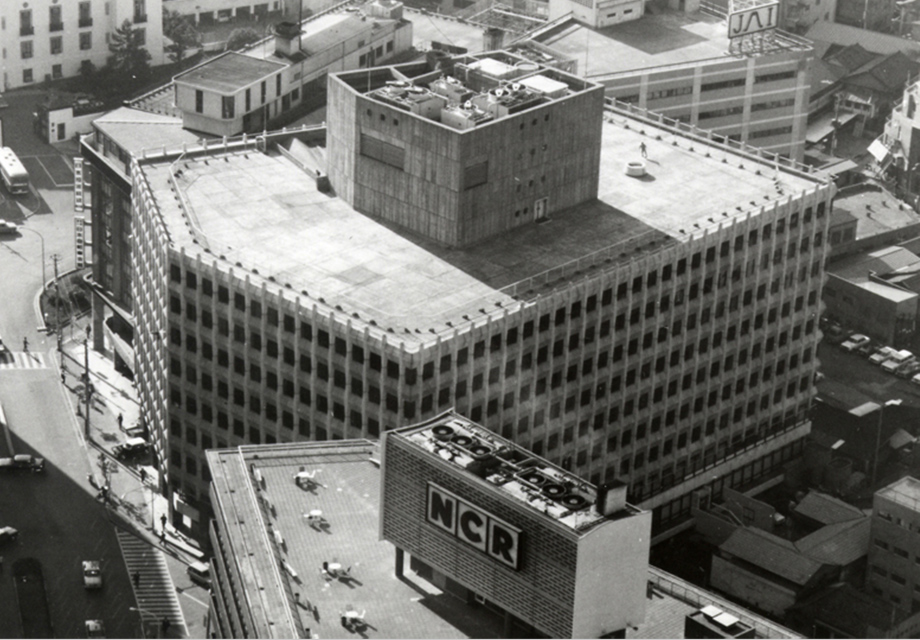
21. Brand New Control Center for SP Alarm
In July of 1970, a brand new office designed exclusively for the Central Control Center called the SP Alarm Center was opened at 2nd Floor Rito Center Building Harumi, Tokyo. At the same time, Regional SP Alarm Centers were either opened or upgraded and the total number of the centers increased to 18 nationwide.
The capacity of the Alarm Center was boosted from 700 to 50,000 customers at a breath (the actual customer base as of the previous year was 500).
The SP Alarm system, which had contributed to the arrest of “Serial Killer 108” on April 7th of the previous year, was now set for tremendous growth.
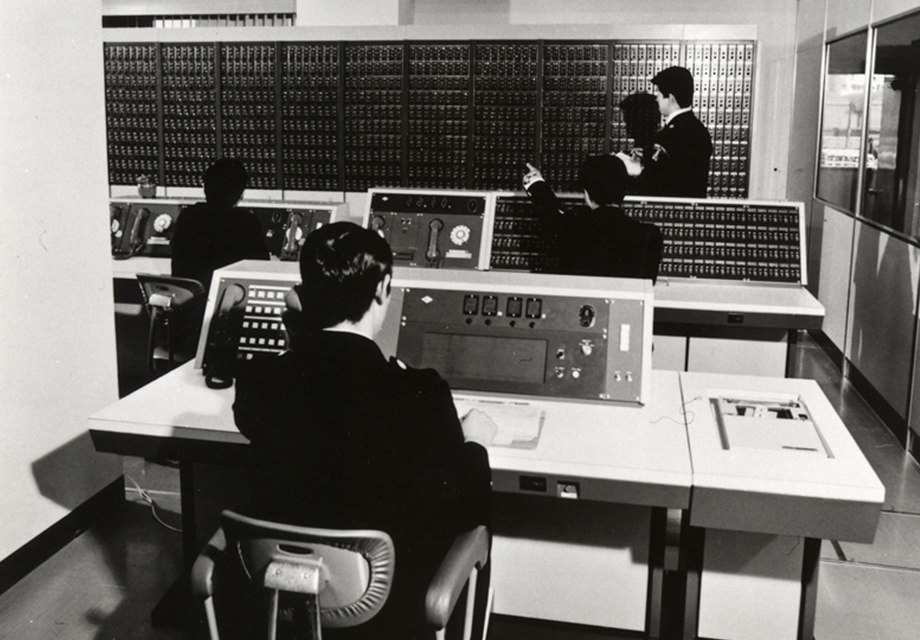
22. Withdrew from Patrolling Business
In 1970, Iida took a strategic decision during the Regional Manager Conference held at Fujiya Hotel, Hakone. “It is against human dignity to have employees do what machines can do. Therefore we will withdraw from the patrolling business. We will stop growing the static guard business and increase our prices. We will focus our sales activities solely on SP Alarm.” Everybody attending the meeting was caught off guard.
It was inevitable because the customer base of patrolling had reached 2,000 the previous year, whereas that of SP Alarm was 500. From the very next day, all managers had to visit their customers to ask them to switch to the SP Alarm.It was no surprise that many customers either did not accept or opted to terminate the contract. After overcoming unimaginable challenges, SP Alarm customers swelled to 5,000 by 1971. On the other hand, customers of Patrolling Services shrank.
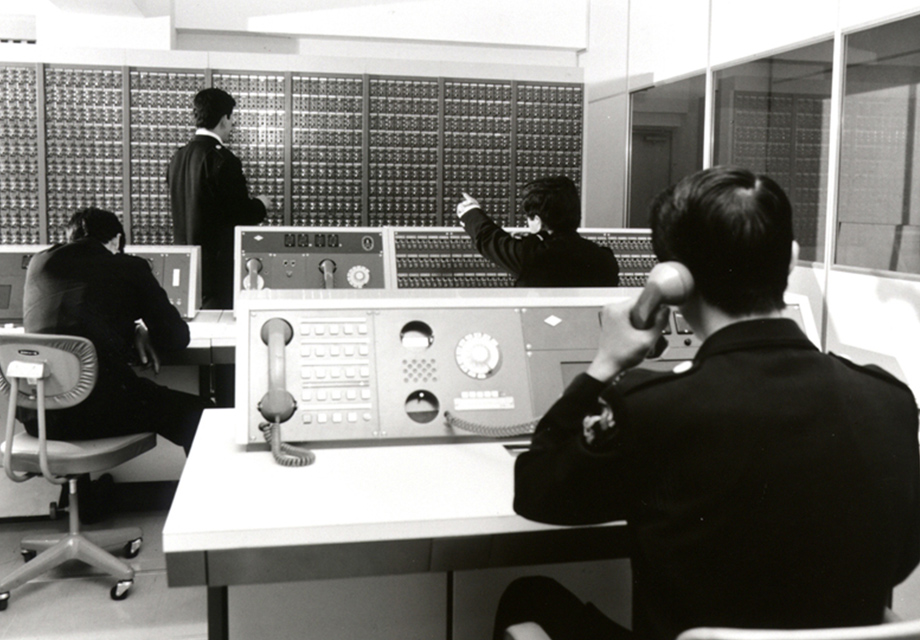
23. Mission completed at Osaka EXPO
1970 is remembered by many because it was the year when Osaka EXPO was held in Senri, Suita City, Osaka. It was the first time that an international expo was held outside the western hemisphere, with participants from seventy seven countries. The event commenced on March 15th and continued until September 13th for 183 days.
Prior to the event, visitors were estimated to be 30 million. The actual number turned out to be 64,220,000, a record breaking number at the time. There were 118 pavilions, of which the American pavilion display of the moon’s rock attracted much popularity.
Security for the Osaka EXPO started during the construction phase, which was a joint operation with other companies. The mission started on March 15th, and SECOM was responsible for the South Section. The mission was completed successfully without any incidents on September 13th, two years and one month later.
The experience from this project was passed on to posterity and accordingly applied at the Osaka International Championships in Athletics held in August of 2007.
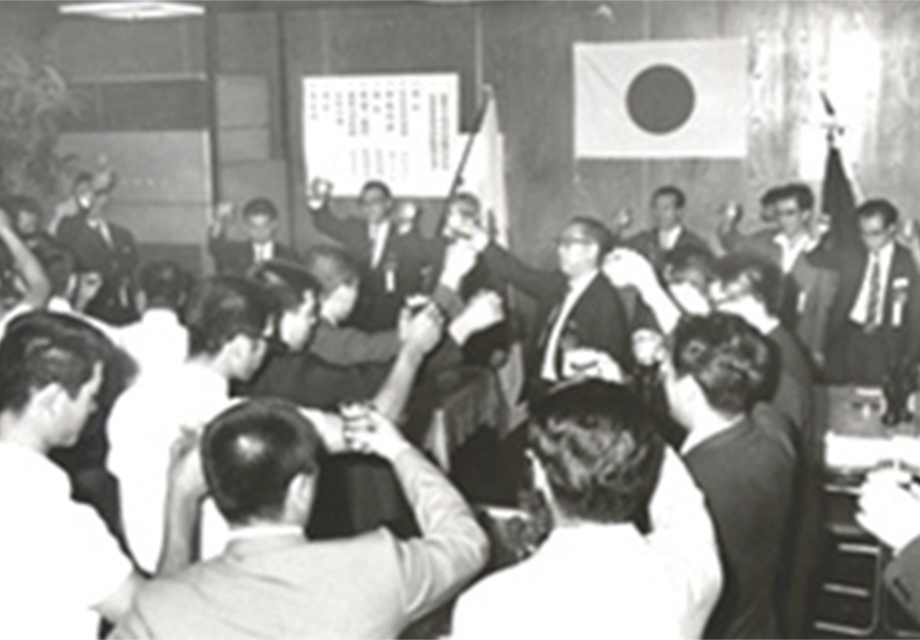
24. Baseball Superstar Shigeo Nagashima appeared on SECOM’s TV commercial
Baseball Superstar Shigeo Nagashima, who later became a Hall-of-Famer, appeared on the company's TV commercial as of March 20th, 1971. Many of the younger generation may be aware of the recent commercial in which a retired Nagashima would say, “SECOM shite masuka”, or “Have you got SECOM?” But this was a period when Nagashima was at the top of his career, and he agreed to show-up on the commercial until the following year.
On February 19th, a crew went to Miyazaki Camp where Nagashima was training. He was filmed playing a spectacular third baseman. He passionately cooperated throughout the project, remaining there even after others had finished training. The commercial emphasized our service's impregnable defense and was well received by the public helping to promote the recognition of the company’s name.
Mr. Nagashima appeared once again on the company's TV commercial in 1990. He is still the company’s PR character today.
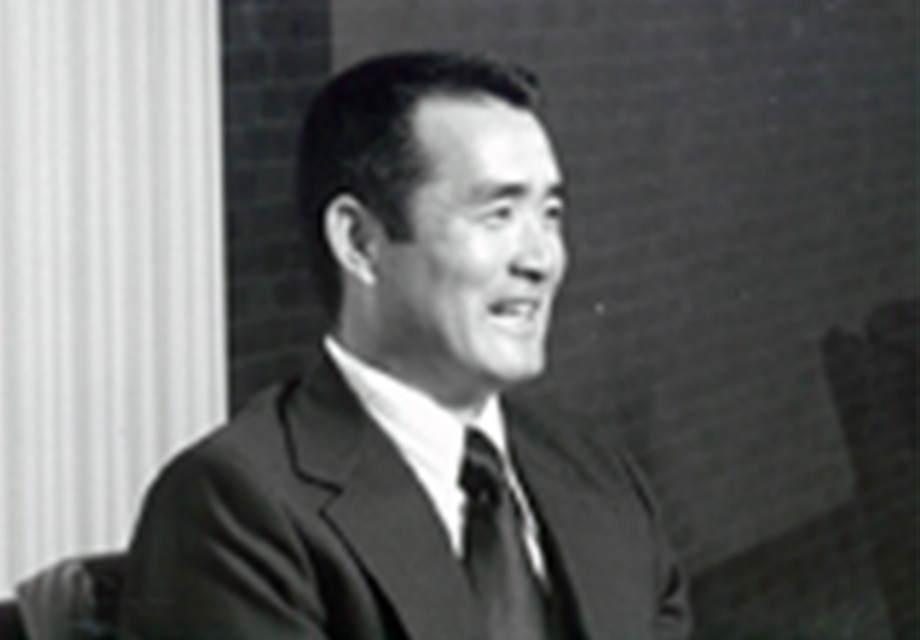
25. Introduced an SP Alarm with public telecommunication line capabilities
On October 27th, 1971, at the Kitanomaru Park Science Technology Building, a press conference was held to announce the new SP Alarm with public telecommunication line capabilities known as the SP Alarm-Phone. It had been five years since the first SP Alarm was introduced to the market.
Until then, the system had worked solely on a leased special communication line. It was the first time that an online security system had a public communication line capability making it dramatically more affordable for the users.
Public phone capability was a breakthrough technology in those days and was a key development for online security systems to become a de facto standard.
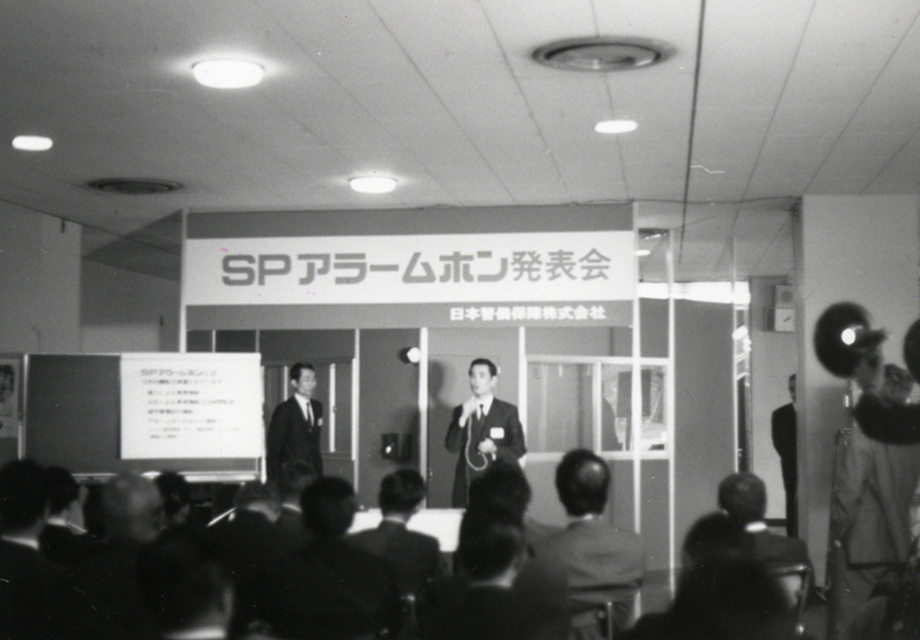
26. Sapporo Olympic Games
Eight years after the Tokyo Olympic Games took place, the Winter Olympic Games were held in Sapporo from February 3rd-13th of 1972. The nation was especially excited due to the Japanese athletes’ outstanding performance at the ski jumps.
After successfully securing the Tokyo Olympic Games, the company played an important role in providing security service during the Sapporo Winter Games. Many events like ski jumping and downhill skiing were outdoor events which, under blizzard conditions where temperatures would reach negative ten degrees celsius, made the mission very challenging.
The primary task was to control the traffic of people and vehicles in and around the venues, and the mission was carried out without any incidents or accidents. Due to the daunting challenges, morale among employees rose higher than ever.
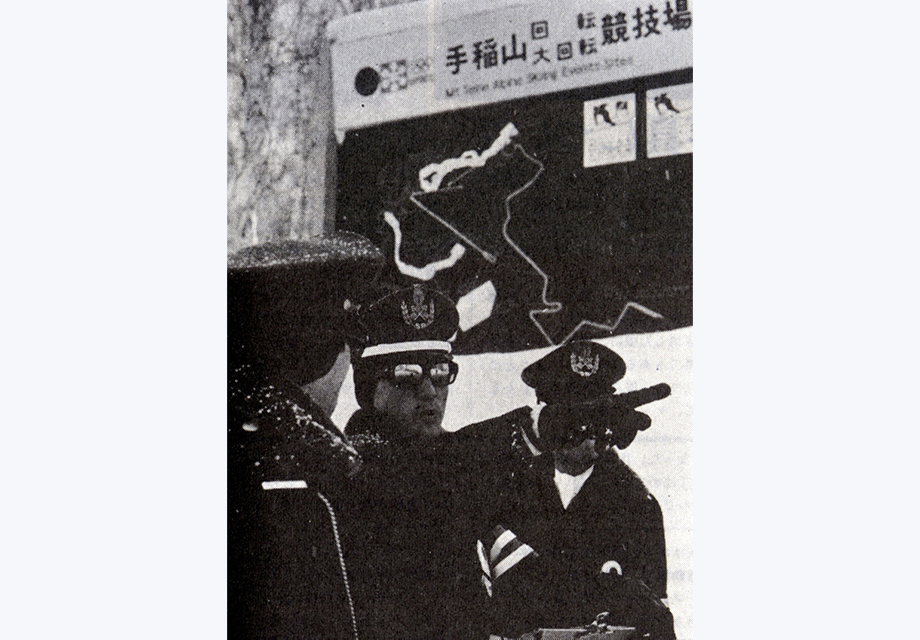
27. The SECOM brand was born
Since the company was established in 1962, the name Nihon Keibi Hosho had become widely known to the public through its innovative services and by providing security for events such as the Tokyo Olympic Games and Osaka EXPO.
It was in February of 1973, when crimes were on the rise and security could not be taken for granted any longer. Meanwhile communication technology was improving dramatically, and a new brand SECOM was being established. SECOM is an abbreviation of “security communication,” connoting a new security system that combined people and science.
For ten years, the SECOM brand and the name Nihon Keibi Hosho co-existed. Dual brands existed until SECOM ventured into the cable television business, a point of time when “SECOM” was well known amongst the general public, and it was a turning point when SECOM was considered not just a security company any more. It was in 1983 when the company’s name was finally changed to SECOM.
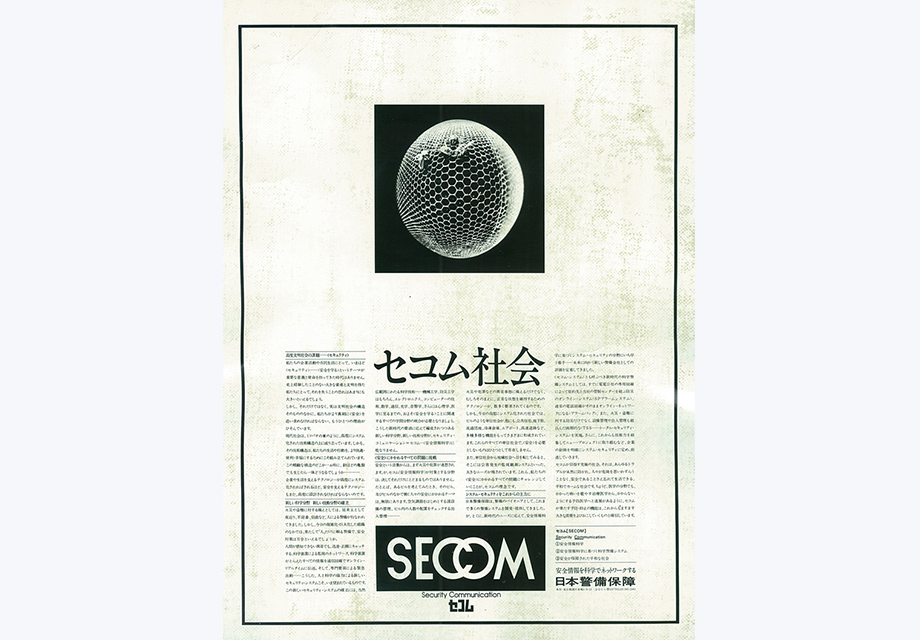
28. Introduction of “SECOM 3” for large facilities
On March 8th, 1973, at the Harumi International Exhibition Hall, where the very first Exhibition of Security and Fire Protection Equipment was held, SECOM participated with its own captive booth and product release of SECOM 3 was officially announced.
SECOM 3 was the very first system that integrated intrusion detection, fire detection, access control, and facility monitoring. Thus, it was the first “total solution system” for large facilities. In addition, it was the first product that carried the brand name SECOM which had just been introduced in February. Upon inauguration of the brand SECOM, the company had declared the establishment of "SECOM Society" as its corporate mission. “SECOM Society” was considered to be “a society where security is guaranteed,” and it was essential to seek a solution for large scale facilities. SECOM 3 would be the platform for large scale facilities, and would later be innovated upon into what is now known as AZ System.
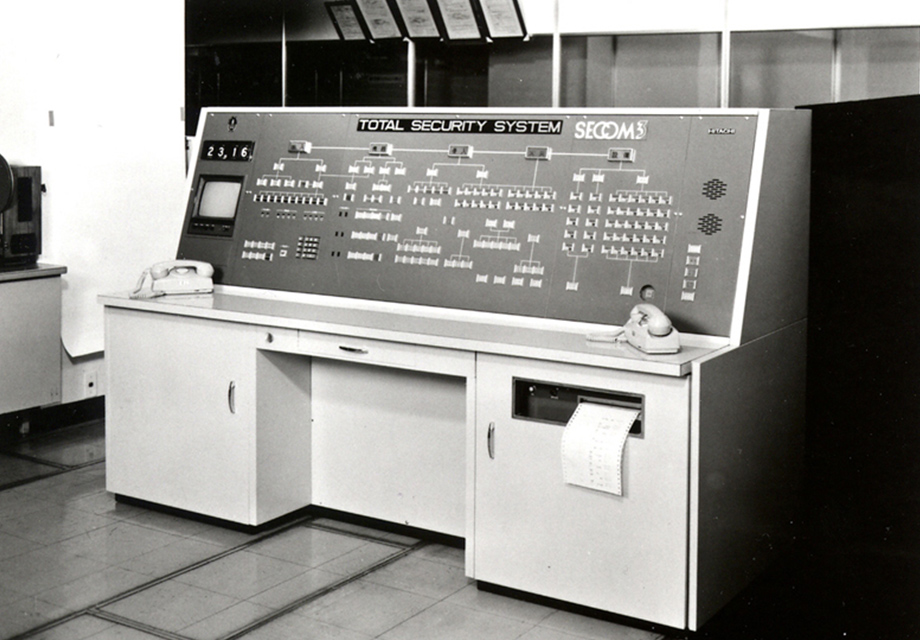
29. SECOM Cooperated with Major US financial institution for development of a Fully Automated Banking System
On August 1st 1973, SECOM signed a business partnership agreement with Huntington National Bank, one of the most innovative banks in the United States at that time, to develop a fully automated banking system called “Handy Bank System”.
Originally developed for Huntington National Bank, the system was the first of its kind in the world, based on a mini computer. 80% of banking services, including depositing, withdrawing, remitting, and repayments were made possible without the hassle of lining up for a bank clerk. The system operated uninterruptedly 24/7 and could be installed anywhere including department stores, supermarkets, airports, and even drive-ins. The very first “store” in the U.S. was opened in March that year. This partnership eventually led to the product launch of “CD Security Pack” on April 1st, 1974. The system was well received as the nation’s first security system for cash dispensers. Further in November, a new product designed to detect outdoor intrusions called “SP Border Contact” was launched.
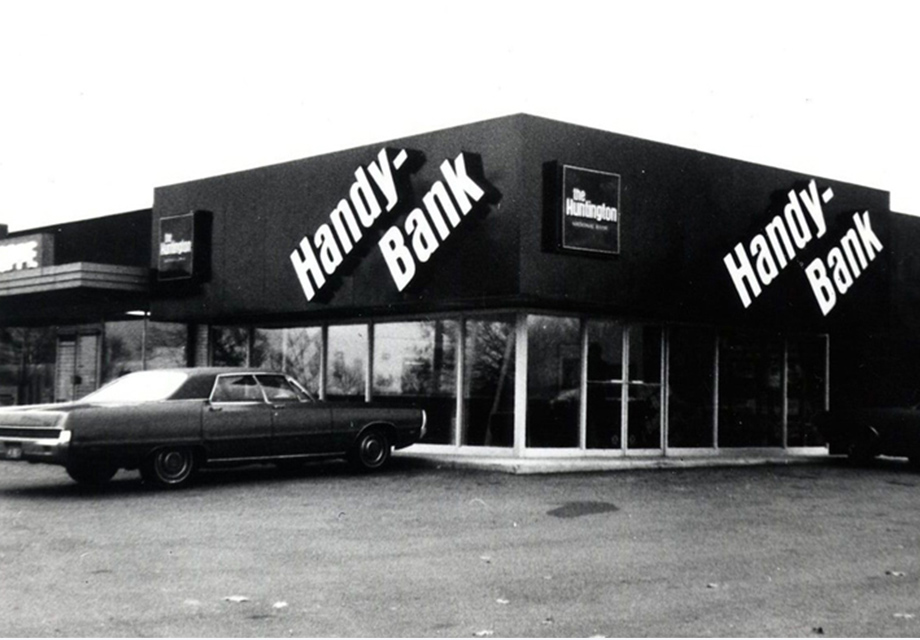
30. The world’s first C.S.S. (computerized security system) was launched
The company was listed on the Tokyo Stock Exchange Second Section on June 24th, 1974. By this time the company had an office in almost every prefecture and had a complete national coverage.
On March 1st, 1975, the world’s first computerized security system (C.S.S.) started its service at the Tokyo Control Center located in Harumi, Tokyo.
Before then operators needed to manually monitor warning lamps, while the new system would automatically display customer information including the time when the signal was received. In that sense it improved productivity and safety. This new system boosted online security business dramatically.
